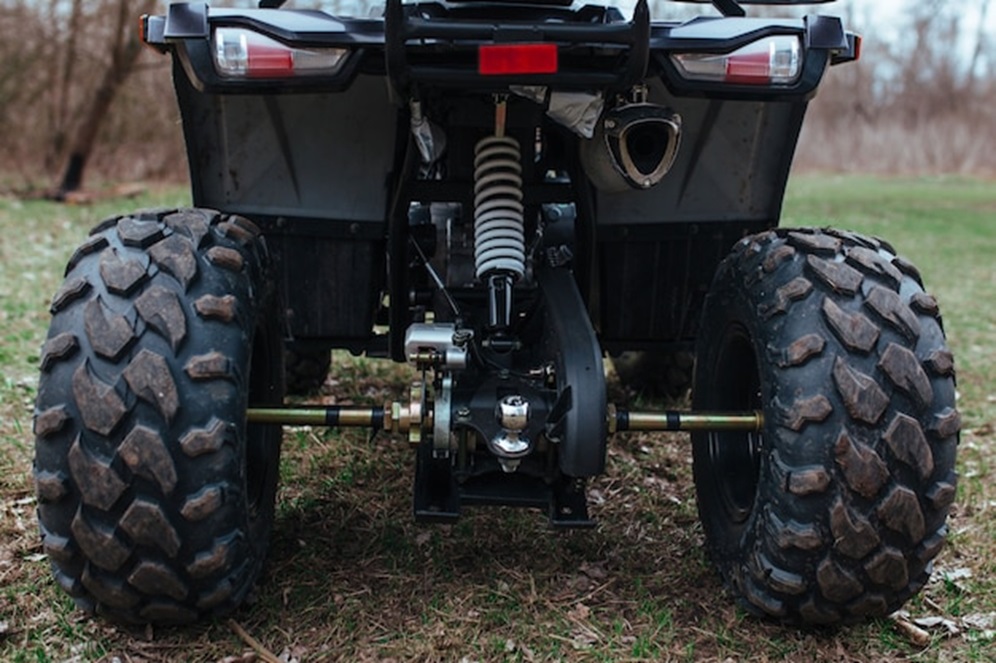The all-terrain vehicle can be used over off-roads such as rough terrains, hilly areas, muddy surfaces, dust-laden roads, etc. The point of axis in an ATV is the axle point that connects the engine to the wheel. In simple words, the engine creates propulsion for wheels to move forward. The axle can be used to keep the wheels in position.
The ATV newbies often lack knowledge about the ATV axles. They usually get baffled between a solid rear axle and an independent rear axle. Each holds differing characteristic features. The call to install either of the two makes riders scratch their head and often end up settling with the least suitable option for themselves. Since a challenging game enforces tough calls. So, taking up any random axle may be fatal for the riders.
It is essential to make a rational decision regarding installing the ATV axle. Hence, to make a stern decision, check out the following differential between the solid rear axle and independent rear axle
- Solid Rear Axle
The ATV tire tubes are attached to the engine, which sends signals to wheels in case of a change of movement. The solid rear axle offers strength, but its sturdy nature fails to make it flexible. The due course of action undertaken over rough terrains is challenging and is hard to overcome with non-flexible axles. Although it connects both the rear wheels, fewer moving parts make it tough to ride over rough areas.
The solid rear axle offers endless features and top-notch performance to ATV riders. Indeed, it has no stub axle, which is easy to maintain and reduces the risk of breakage. IT even provides stability. Its lower rolling centre is responsible for decreasing the likelihood of tipping over. It offers consistent and reliable movement to the wheels so that the configuration of the space between the rider and the ground can be easily calculated.
The ATV riders looking for good racing work and aggressive rides over off-rods may take it on board readily. The issue associated with the SRAs is the long pipe which fails to provide flexibility in the movement of the wheels.
- Independent Rear Axle
The features which remain absent in SRA are accomplished in the case of the independent rear axle. The problem of flexibility gets resolved with the independent rear axle. So, if one axle tire tube crawls over a rock, the other tire will remain intact to the surface and offer smooth coverage of the uneven sites. The softer functionality helps to scale heights and go for trail riding, rutted and rough trails, and rock crawling.
Although it runs without any jerk or stiffness, it cannot handle a heavy load. So, if the rider is heavyweight and brings along a load of content, the ATV ride is less likely to get clearance. There would be a higher likelihood of mechanical issues, which can be overcome with regular maintenance.
Parting Words
The ATV rider may use either of the two axles based on the usage of the vehicle. If the ATV is to be used for heavy loads and light movement, then installation of a solid rear axle would be appropriate. If the ATV is to be used for play and comfort performance, then going forward with the independent rear axle would be prudent.
You may also like
-
Full Face Helmet vs Off Road Helmet: Which One Should You Choose for Your Ride?
-
Fleet Vehicles: Why Maintenance Cuts Fuel Use
-
Corrosion Prevention for Car Hood Undersides: Shielding Your Investment
-
How to Choose the Right Vehicle for Your Needs
-
How Much Does It Cost to Design a Vehicle Wrap? A Complete Breakdown for Businesses and Creatives

